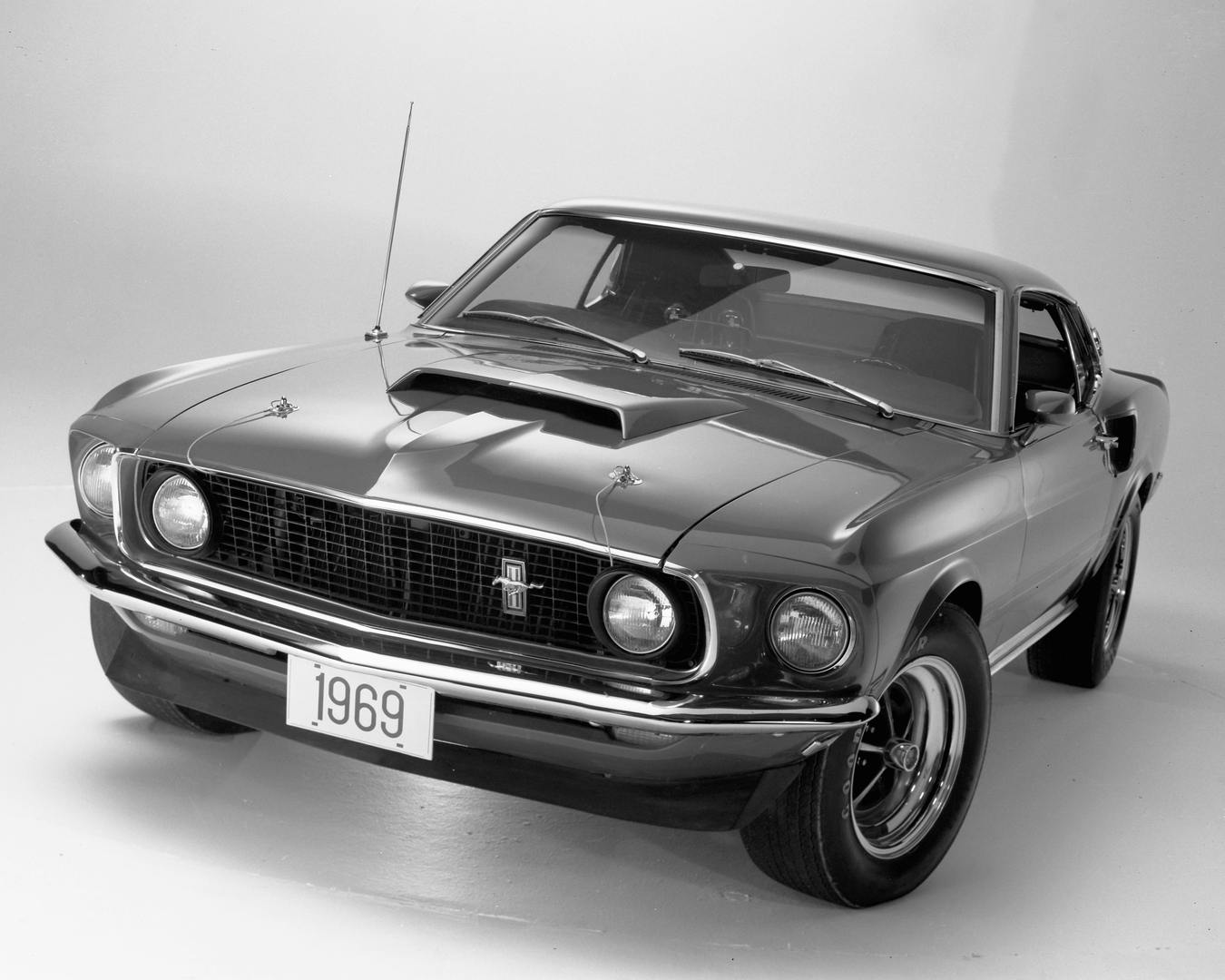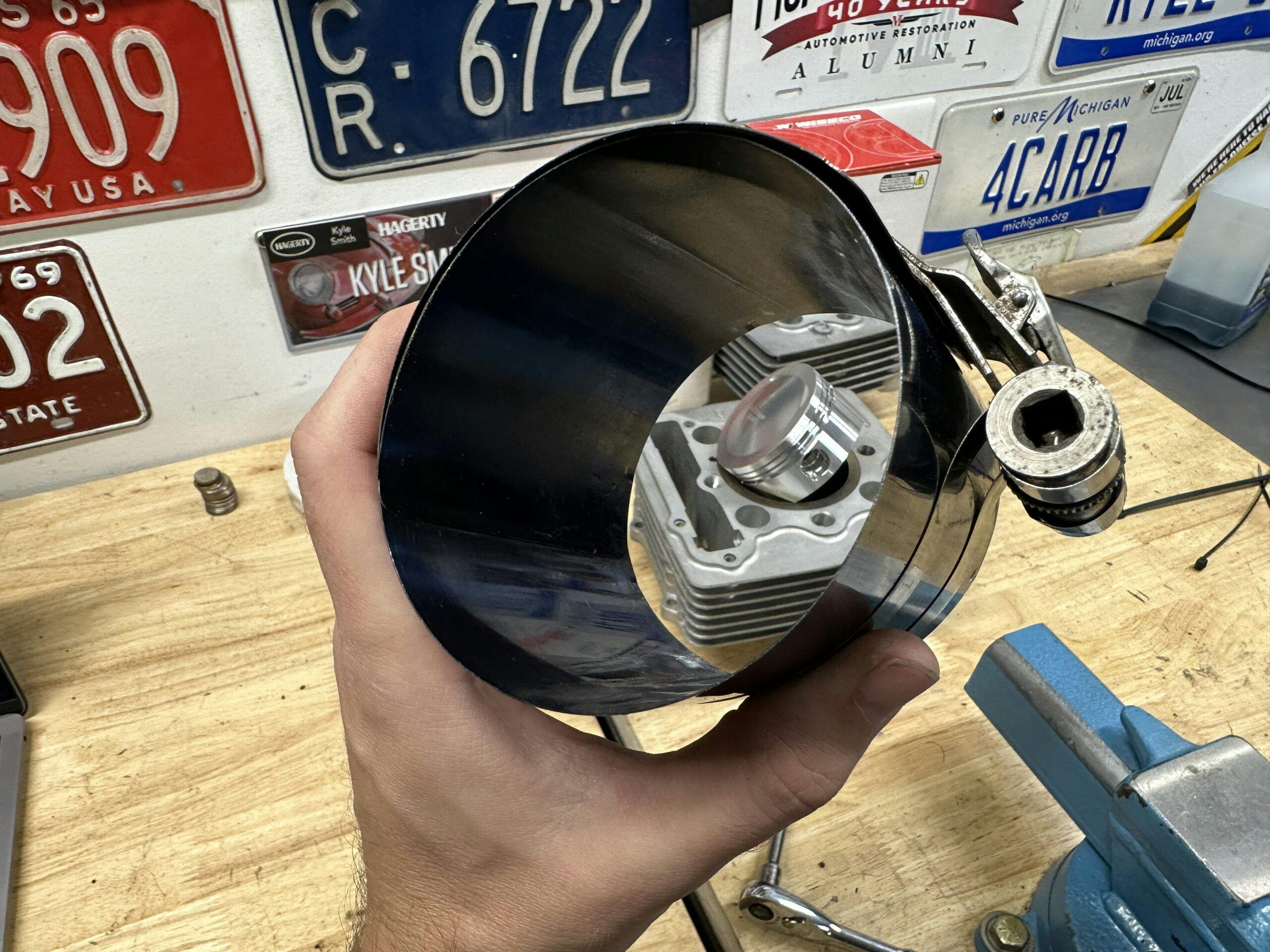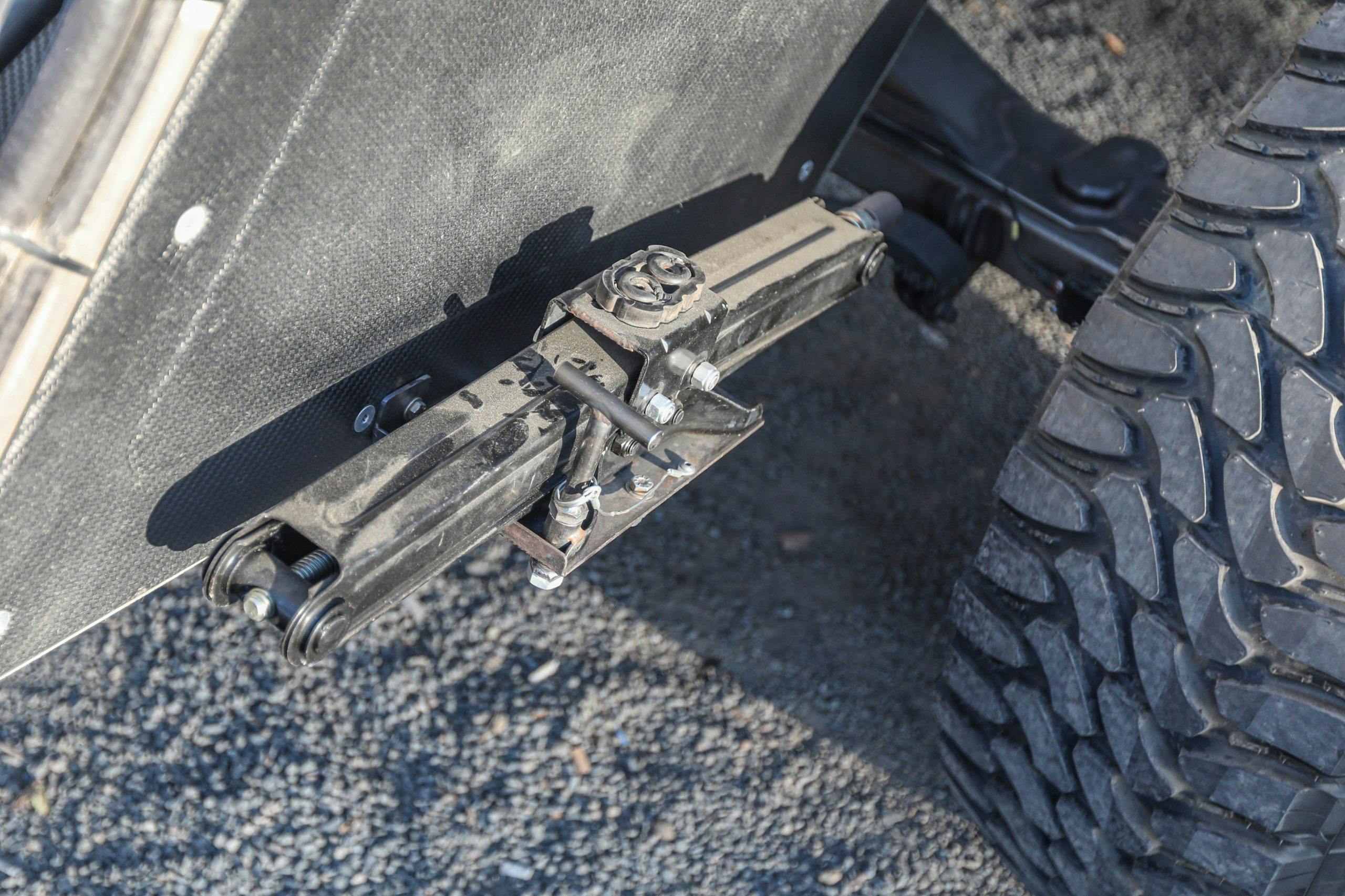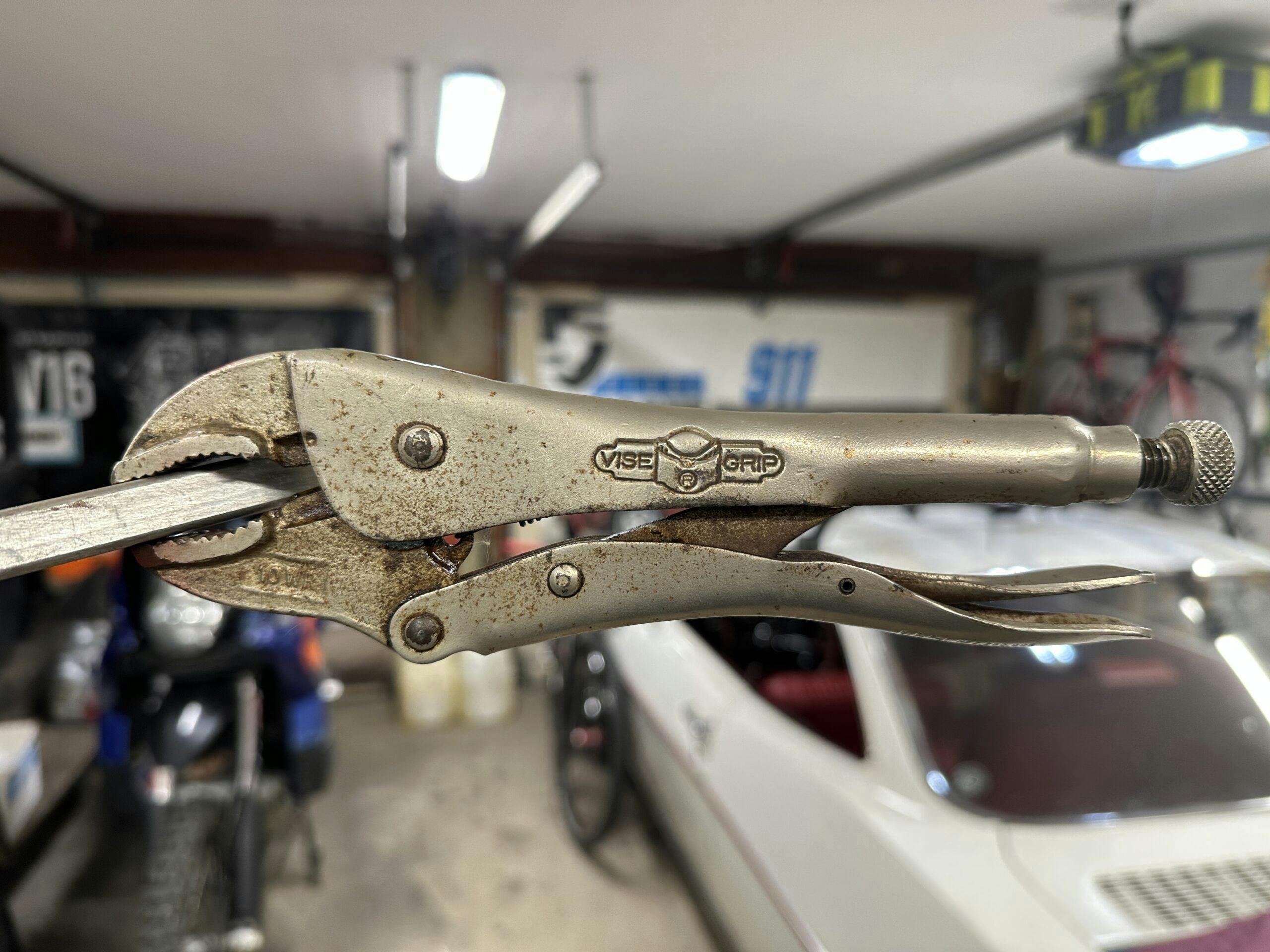Media | Articles
5 old tool designs that survive nearly unchanged

Some shapes in the automotive world are just timeless, like the grille of a 1969 Mustang. Even restomod shops leave it alone. The same goes for tools: During an evening of working in the garage, you’re likely to touch several whose designs have survived, nearly unchanged, since they were invented.
For the sake of argument, let’s exclude anything that is simply a formed piece of metal—screwdrivers, sockets, and hammers—and focus on items with some kind of mechanism. Inventors are likely the first to tell you that perfection on the first or even the second try doesn’t happen often, but these five tools got awful close.
Ratchets

The use of gears to create a one-way mechanism is old—over a century and a half. J.J. Richardson patented the idea of a ratcheting wrench in June of 1863 and, while his design appears archaic by modern standards, it relies on the same principles as the ratchets that sit in virtually every toolbox around the world.

A center gear doubles as the attachment point for the socket. That gear interacts with two smaller ones that force it to spin either clockwise or counterclockwise. The direction of a modern rachet is easy to switch, and its gears have evolved to be much finer, minimizing the rotation required to grab the next tooth, thus making the ratchet more efficient in tighter spaces.
Bench vise

If you thought of one tool when you saw this article’s headline, it was probably this. History traces the bench vise back to the 1700s, but the first modern version was made of poured cast iron in the 1830s. The casting process was rudimentary, though, and resulted in a porous finished product that had the potential to break during use. Today, the best modern vises are forged.
Piston-ring compressor

The modern four-stroke engine traces back to Nicolaus August Otto and his experiments with compressing the air and fuel inside a cylinder prior to ignition. This discovery led to more efficient engines that gave us—literally—more bang for a buck’s worth of fuel.
To contain compression and combustion, you must put a seal on the piston; to do that, you must be able to compress said piston rings to fit into the cylinder bore while you assemble it. Consider that Otto was experimenting with his designs in the 1860s, and it’s reasonable to conclude that our spring-form piston ring compressors trace to this time period. Not everyone uses these tools, but those who do know just how important they can be.
Scissor jack

As long as there have been cars, we have needed to lift them. While an incline plane (a ramp) effectively raises the car while the vehicle is on its wheels, a spiral incline plane combined with four metal arms and a base will lift a car from any point to allow you to remove wheels or other parts. That is the essential form of a scissor jack: A screw that pulls together two arms that provide lift.
The design traces back at least 100 years and it is nearly comical how little has changed from the patent drawing to the folded-metal jacks found in the trunks of so many modern cars. Jacks and spare tires might be falling by the wayside, but the simplicity of a scissor jack will stand the test of time, even if it has never passed the test of safety with flying colors.
Vise grip

The main thing we need while working is a third hand, something that can hold our workpiece together or give us a handle on something otherwise untouchable. The over-cam design for locking jaw pliers might be the youngest one on this list: 99 years have passed since inventor and blacksmith William S. Petersen penned the design that became the nearly indispensable tool we know today. The easy-release lever was added in a slight redesign by Petersen in 1957 (above).
Have a tool to add to the list? Leave a comment below telling us another tool that has stood the test of time. The history behind what we take for granted can be quite fascinating.
***
Marketplace
Buy and sell classics with confidence
Check out the Hagerty Media homepage so you don’t miss a single story, or better yet, bookmark it. To get our best stories delivered right to your inbox, subscribe to our newsletters.


























Hammer?
First tool I thought of. A real go to for most any problem
I used one to “fix” my old computer…
Your head? lol sorry I couldn’t resist hehehe…
If you cant fix it with a hammer, you have an electrical problem…
Give a kid a hammer and everything looks like a nail.
Yes I was going to say the oldest and most on changed tool is the hammer. Sure they went from a wooden handle tied to a rock with twine to steel and fiberglass but they really are the original tool.
A hammer: Whatever you happen to have in your hand when you need to bang on something.
Lol
I just sorted through a pile of old tools, much of which I donated to a local cause (I don’t need 60 more flat blade screwdrivers, two-position or slip-joint pliers I rarely use so having a dozen is not helpful).
I agree with leaving hammers, etc. out of the article though I did keep a few claw hammers with a different curve than I see at the box stores today. The quality of some of the tools was superior to the “average hobbyist” quality of today.
Box planes (planers), levels, compasses, scribes (though one in the pile looked more like a set of pliers and fooled me), even electrical testers aren’t that removed from the scary two-bare-ends of wire attached to a light things I was finding.
Certain power tools just change the metal/alloy casings for plastic (add batteries) and you have the modern item: hand drill, jigsaw, circular saw. While some of these tools were very well made, using them all day long vs. the lightweight modern (and the safety switch factor if that matters to one).
The “one-way” ratchet with the square hole in the centre in this pile was in-between the illustration in the article and modern ratchets (one piece casting like modern, no exposed mechanism) and was brilliant as you just flip it over for the other direction. The square drive hole was 1/4′ and lacked a detent so things staying together would have been a hassle plus lacking sockets with 1/4 shafts adds more wiggle to the works.
I kept the 1942 patent Vise Grip with no release handle and the slightly different proportions. A bit of surface rust and in perfect working order. Even if it was the last one made like that in 1956 it is still cool to me.
Box plane is a good one to note! Levels was one that Sajeev and I discussed as I was writing this and I left it off because a bubble level is tangentially related to automotive projects. But when you need one there is no real substitute…
Bubble level and a vise, used together to check for twist in a drive-shaft. Not sure how else you could do it.
By using a lathe. Not for cutting but for checking twist and true lines. Used for years in shipyards for straightening and final tuning. We used a large machinists lathe at a friends shop for our race cars ‘back in the day’.
Bubble levels useful for some suspension work, as well. I always checked driveshafts with a lathe.
I have a pair of Vise Grips which was given to me by a high school classmate back in 1962. His dad worked at a local Air Force Base and likely took it from work. Maybe they got the newer ones with the release lever and trashed the older version. I now have probably a dozen or more of the various styles of Vise Grip pliers, but none get used more than that first one I got over 60 years ago.
Most basic hand tools like screw drivers, hammers, wrenches, etc. have been around for years essentially unchanged. Think of the humble pry bar. Today’s may be more durable and ergonomic to use, but the simple lever has been around since humans started making tools. I also think of more “modern” creations specific to automobiles such as the spark plug gap tool and feeler gauges.
Actually, the Lever is one of the six simple machines. It was in use long before humans walked the earth as was the inclined plane and the wedge.
I’ll concede the wheel and axle, screw, and the pulley as human inventions.
Who used the lever before humans walked the earth ?
Dinosaurs used them to pry smaller dinosaurs out from between their toes 🤔
“As we run men down to-day” –Kipling
Apes and proto humans. Even modern apes, think chimpanzees, use simple tools such as levers, hammers, dipping sticks. Otters use stones for hammers. Human beings aren’t the only smart creatures, we’re just the noisiest.
A screw is simply a twisted inclined plane.
Finally you brought up the pry bar….or any lever. As old as the hammer!
Money and brains are two tools that aren’t used wisely enough…
I don’t really see where that has anything to do with this article ????
A pair of Vise-Grips, a magnetic screwdriver with changeable tips, and WD-40- and I can do most any non-major repair job. on anything.
Gear puller? Timing light? How did we measure dwell angle before electrical meters? My oldest meter dates back to the early ’60’s, but I’m sure similar ones were in use decades earlier.
A matchbook cover
On a trip from Michigan to Boston I rescued two stranded motorists with this technique. Burnt point polisher and gapper all in one “tool”.
Yup – simple is best. Try that with a Zippo
TG, 93Miata- I haven’t thought about this improvisation since high school in the ’70s. With a deft hand, this even works with Mallory Dual-Points (‘member them?). I don’t know whether to weep for how old I’ve gotten or laugh at memories returned by your observation. Thanks both!
Yes I remember my uncle using a matchbook cover to set the points and the striker on it to file the points if they were burnt. Great emergency tool and everybody smoked so you always had them in your pocket 🙂
We set the spark timing by a point on the flywheel. Dwell? Nah, the buzz coils ran for extended periods, multiple make/break cycles – multiple spark systems.
By reading the actual angle at the distributor. VW owner’s manual from the late 50s and early 60s gave the method using a feeler gauge on the points and angle check to verify it. VW intended the timing on the points be set using a bulb or continuity tester with the engine off and not a dwell meter for most of the air cooled years. I used that method but then checked it with a dwell meter and never once did the feeler gauge/angle method fail to work.
Using a degree wheel, a pointer attached to the distributor shaft, and a light bulb is more accurate than a dwell meter. That is the way my dad taught me to do it.
My Renault 4CV owners manual doesn’t show dwell angle for setting the timing. Like VW, you’re supposed to use a 6v light bulb attached to two alligator clips and set the timing by the mark on the generator pulley (rear engine car, so flywheel isn’t visible). Easy to do and works just fine. The owner’s manual also contains detailed instructions on valve lash setting, points replacement/timing, and a fold-out, color keyed full wiring diagram, with detail drawings of every electrical item on the car, complete with wiring colors and numbered wiring runs.
The 400+ page owners manual on my wife’s 07 RAV4 has 28 pages on installing a child seat, 14 on operating the audio system, but doesn’t tell you where the oil filter is located, or how many quarts the sump, radiator, transmission or differentials take–or the type of fluid used.
’02 Original- Toyozilla demands you get your service and maintenance at the dealership, so you don’t need to know all that technical stuff! Haynes or Chilton will be your good friends from now on.
“Easy release handle” on vise grips? Well, yeah, a lot of the time – maybe even most of the time. But I’ve sure found a lot of times when the handle surely didn’t release all that easily, and in fact, several times when I actually had to squeeze the handle with a pair of pliers to get it to let go. Those “easy release handles” can sometimes be knuckle busters!
Oh yea! That ‘built-up’ compression energy needs to go somewhere.. I have learned, quite early, that whenever I use that ‘release’ on the Vice Grips to keep myself and my fingers, etc., out of the way..
It all depended on how tight you had the vice grips on whatever you were using them for. The tighter they are, the harder it is to get the easy release handle to release 🙂
Maybe I missed it, but no mention of Channel Locks or the Crescent wrench?
I didn’t realize the Channel Lock design traced back to 1934. Maybe I’ll find a few more and spin up a part two of this list!
Well, here’s a couple. Files and a workbench.
Channel, and Crescent are the company names, they are called respectively, adjustable pliers, and adjustable open end wrench. Our auto mechanic teacher pounded these names in to our heads. If you asked for a Cresent wrench, he would ask you what are you talking about.
Actually the generic term for Channel Lock pliers is “arc joint pliers.”
And if he had asked me for an adjustable open end wrench I would ask him what he was talking about. It’s always been Channel Locks and Crescent wrench and always will be for me.
Dan and Stanley – “Crescent” wrench also called “variable metric” due to uncertain settings one SAE nut to the next. Another, Crescent used as a rough micrometer to find needed nut size.
Beer.
Vise Grips are a trade name for locking pliers, Crescent wrench is an adjustable end wrench just like Freon is a trade name for refrigerant and a Xerox is a photostatic copy. Just saying.
While “vice grip” is a brand name for locking pliers, it could be perceived as a type of pliers since the inventor patented them calling them vice grip with pliers being the only name on the original patent. How that is interpreted is up to the inventor.
When’s the last time you asked somebody for Facial Tissue? In 60 years I don’t think I Ever have, and I blow my nose a lot!
And to think that without the German gas attacks of WWI “Kleenex” never would have been developed. It was the original filter in gas masks.
In England a “vice grips” is a “Mole Grip”
eggheads
How could this list leave off the adjustable nut wrench? Long before Crescent mass produced and improved design, Solymon Merrick of Massachusetts got a wrench patent in 1835, and Loring Coes patented the one-handed screw wrench (AKA monkey wrench) in 1841, 1880 and 1884 – which were improvements of the two handed English patent wrench of the 1700’s.
C-Clamps, from wooden ones that carpenters use, to all metal ones.
Nice timing on this article. Just this morning I was sitting in my thinking room and for some unrelated reason thought of the 3-piece ring compressors for air-cooled VW engines – something I have not used for 40 years.
Me neither, and I’ve used them!
Vice Grips!!
Hands down winner.
In college I drove, not one, but TWO vehicles using Vice Grips in place of the broken shifters.
I was an ‘exuberant’ young driver….lol
One was an automatic with a console shifter and the other was a manual 5 speed.
The 5 speed application actually felt and worked better than the OEM shifter!
Both ‘installs’ worked flawlessly for years. My passengers would always comment;
WTF is that!? …. Looks cool!!”
I did finally spend the money to have a welding shop repair both broken shifters before putting my trusty Vice Grip back in my toolbox.
I’ve used Vise Grips as a kick starter on a Bull Taco years ago…they kick forward btw..
Sorry…can’t resist…since I was taken to task by my editor for doing this: “Vice grips” are what Crockett and Tubbs used to nab drug dealers on Miami Vice…
Vise Grips are locking pliers…
BTW: ’69 Mustang is my favorite muscle car.
It is the best looking grille/headlight design ever.
You were that kid in the lunch room growing up, weren’t you?
No Way, the ’62 Dodge Dart had the best looking grille/headlight design ever!
LOL….That ’62 Dodge has one Alien looking grille!
‘81 Accord for my money.